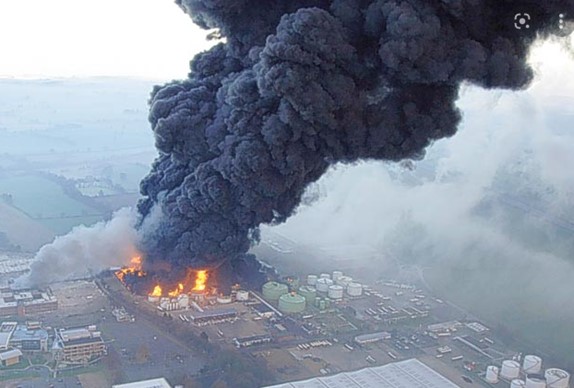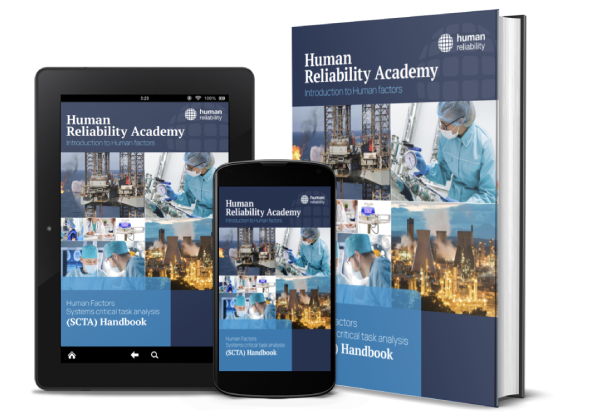UT thickness scanning is a technique which is used extensively in the Oil and Gas (O&G) Industry to examine the condition of pressurised piping and equipment. Done well, the information it provides can assist in the management of Plant Safety; done badly, the information could provide a false impression of the integrity and safety of the Plant.
UT can be used to detect flaws in the material, and for corrosion/erosion thickness gauging. Owners rely on accurate UT thickness results to monitor Plant Integrity, and to plan timely repair or replacement of ageing components.
I started in my current role with Human Reliability Associates (HRA) in November 2021, but before this I worked in the O&G Industry for 14 years; 7 years a rope access UT Technician and 7 years as an Offshore Inspection Engineer. In both roles, I used UT thickness scanning to examine for corrosion of piping systems on offshore production and storage platforms, and petrochemical plants in the North Sea, Europe, and Angola. Based on personal experience, I am aware of the many benefits of UT thickness scanning, but also of the potential for human error when using this technique.
UT is heavily reliant on experienced and skilled UT technicians for inspection and data interpretation. The piping system being inspected may not be inspected again for another 5-to-10 years depending on its service and missed defects can result in a Major Accident Hazard (MAH).
Owners and those involved in Integrity Management need to assure the adequate performance of UT Technicians and they must be aware that even highly trained Inspectors and technicians can make simple slips and omissions… and such errors can initiate MAHs.
UT Technicians use their skill and experience to examine hundreds of piping systems annually, working long hours, in harsh conditions, often with difficult access. Their performance is often faultless, but it is important to recognise that they are human and fallible, and one mistake can have disastrous consequences.
Human failure in Maintenance, Inspection and Testing (MIT) is cited as a causal factor in a significant number of major accidents worldwide, including Buncefield (2005) and Macondo (2010). Inaccurate analysis of the data could result in an area of internal corrosion going undetected, and without repair or replacement, this could lead to a loss of containment before the next Inspection.

Buncefield Explosion 11 December 2005
Owners and NDT companies should demonstrate a clear understanding that even experienced, competent, well-motivated UT technicians are prone to errors and under certain circumstances, may not follow procedures. An error in equipment-calibration for example, if undetected, will result in inaccurate thickness readings and may give mis-placed confidence in the integrity of the pipe. Cold and fatigued, a UT technician may decide to take a UT thickness measurement for a point which is more accessible than the point which is specified in the work instruction.
The HSE states that human reliability during Inspection should be regarded as a high priority Human Factors Inspection Topic. Owners and NDT companies must consider human reliability in relation to the UT inspection tasks, and aim to reduce the risk of human error by making improvements in the following areas:
Communication
Owners and NDT companies need to ensure that their UT technicians are fully aware of the importance of their role and of the need for accurate results. On systems where the lack of containment occurring could lead to an MAH it would be wise to consider involving the UT technicians in the risk assessment prior to starting the task.
Preparation
In my experience, UT technicians are given little documentation other than a set of isometric drawings which show the locations of the test points. It would be beneficial if UT technicians received a job pack containing a procedure, previous inspection reports with the known defects highlighted and piping specifications showing the nominal thickness and corrosion allowance for each of the systems they’re inspecting.
Owner and NDT companies should also consider access requirements to ensure that UT technicians are able to carry out their critical task in some level of comfort, and to provide PPE which is suited to the conditions.
Reporting
In my experience, reporting the results of the inspection could take longer than the inspection itself, and it was not unusual for UT technicians to feel pressure to complete the report as quickly as possible so that they could return to the task of inspecting. Despite the criticality of the results, on certain contracts, I felt that there was some degree of suspicion and mistrust of inspectors who took their time reporting; Owners and Inspection Engineers prefer to see a UT technician on Plant scanning pipework rather than sitting at a pc. Yet they rely on accurate reporting for remaining-life calculations and to set inspection intervals.
Auditing
To mitigate against human error, Owners and NDT companies might encourage colleagues to buddy-up and cross check their work, to ensure that the equipment is calibrated correctly and to share experience when analysing results. To a newly qualified UT Technician,the inclusions signal could be interpreted as an internal pit and collaborative working within a team can reduce the number of false calls. Similarly, the signal received from an area of internal corrosion might easily be misinterpreted as being due to poor coupling between the probe and pipe surface.
Owners might also consider using the Inspection Engineer to audit the UT task. From experience, I know that scanning multiple sections of pipe per shift can become mundane and there is a risk that complacency can set in. Knowing that auditing is part of the inspection process might reinforce the importance of gaining accurate results and help to maintain focus.
Conclusion
UT technicians provide an invaluable service to the O&G industry, as efficient inspection increases asset uptime and decreases the likelihood of failures. But I know from experience that the task of scanning pipework can become monotonous, and it can be difficult on occasion to maintain focus, particularly at the end of a long cold shift, or in the latter stages of a 2-week trip offshore. It is recommended that to optimise UT Inspection, Owners, NDT Companies and UT technicians should adopt a human factors approach and seek to manage human failure. A risk assessment should be carried out prior to the Inspection task, to identify where human failure might occur, and the control measures necessary to prevent it.
Seamus is a qualified NDT Technician, CAT 2 Inspection Engineer and Human Factors consultant. If you’re interested in connection with Seamus, you can reach his LinkedIn profile here: www.linkedin.com/in/seamus-brennan-40a217a1
Find out more about our Human Factors Consultancy.














